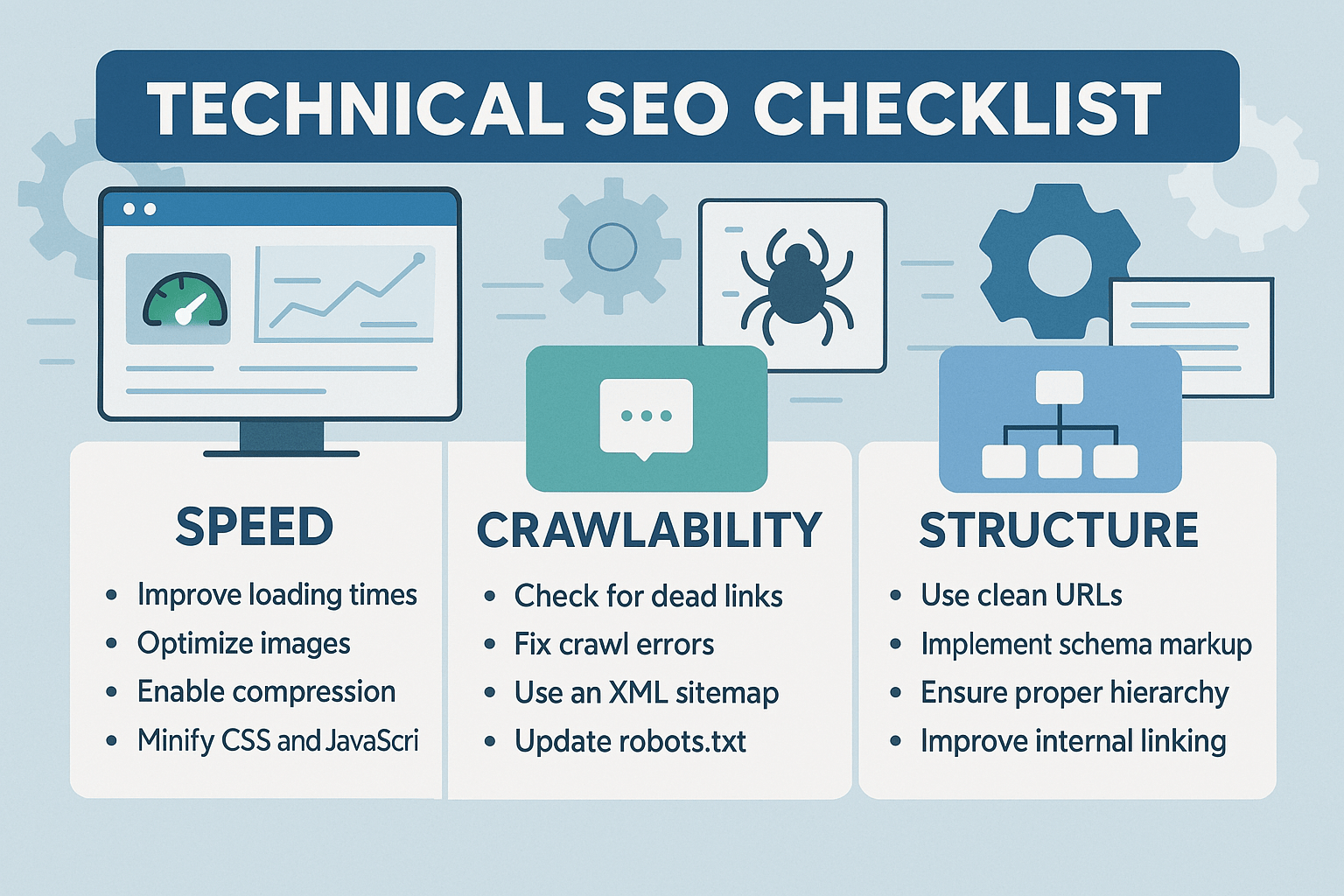You can have great content and strong keywords, but if your site is slow or broken, Google won’t rank it. That’s where technical SEO comes in. It’s the backbone of crawlability, speed, structure, and security.

What is Technical SEO?
Technical SEO focuses on your website’s infrastructure. It ensures search engines can crawl, understand, and index your content easily. Without it, even the best content might never get ranked.
- Fix site speed and performance
- Make your site mobile-friendly
- Ensure proper URL structure and HTTPS
- Submit sitemaps and fix crawl errors
← Missed Chapter 4? First optimize your content structure
Step 1: Improve Website Speed
Slow websites lose rankings. Use Google PageSpeed Insights to test your speed and fix:
- Large images (compress with TinyPNG)
- Too many scripts or plugins
- No caching (use WP Rocket or LiteSpeed Cache)
Goal: Aim for mobile load time under 3 seconds.
Step 2: Make Your Site Mobile-First
Most of your visitors (and Google) come from mobile. Make sure your site is:
- Responsive (fits all screen sizes)
- Clickable buttons & readable fonts
- No horizontal scrolling or broken layouts

Step 3: Submit Sitemap & Robots.txt
Google can’t crawl what it can’t find. Ensure your XML sitemap is submitted and your the robots.txt file allows crawling of important pages.
- Use Yoast SEO or RankMath to auto-generate sitemaps
- Submit via Google Search Console
Tool: Check your sitemap using XML-Sitemaps.com
Step 4: Fix Crawl Errors & HTTPS
Use Google Search Console to find crawl issues like 404 errors, broken links, or blocked pages. Also, ensure your site runs on HTTPS (secure protocol).
- Fix broken internal/external links
- Redirect old URLs to new pages (301 redirects)
- Get an SSL certificate (free via Let’s Encrypt)
Conclusion: SEO Needs a Strong Foundation
Technical SEO doesn’t sound sexy, but it keeps your SEO engine running. Optimize speed, mobile usability, structure, and crawlability—and your content will rank faster and higher.
Next Read : Off-Page SEO – Build Trust with Backlinks →
Previous : On-Page SEO – Optimize Content Structure →
Very good https://is.gd/N1ikS2